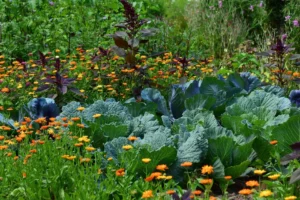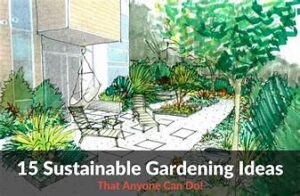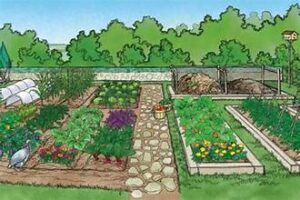
In 2024, sustainable gardening has taken on new dimensions as climate change continues to impact our environment. Designing climate-resilient gardens is no longer just about choosing the right plants; it’s about creating a garden that can withstand and adapt to changing weather patterns. This essential guide will provide you with the knowledge and tools you need to create a sustainable garden that thrives in the face of climate challenges.
Understanding Climate Resilience in Gardening
Climate resilience refers to the ability of a garden to adapt to and recover from climatic stresses. These stresses can include extreme temperatures, droughts, heavy rainfall, and high winds. A climate-resilient garden is designed to handle these conditions while maintaining its health and productivity.
Key factors that contribute to climate resilience include:
- Soil Health: Healthy soil is the foundation of a resilient garden. It improves water retention, supports plant growth, and enhances the garden’s ability to withstand environmental stresses.
- Plant Selection: Choosing plants that are suited to your local climate and soil conditions is crucial. Native plants are often more resilient because they are adapted to local conditions.
- Water Management: Efficient water use and conservation techniques help your garden withstand periods of drought and heavy rainfall.
- Biodiversity: A diverse garden with a variety of plants can better withstand pests, diseases, and extreme weather.
1. Assessing Your Garden’s Climate and Soil
Before designing your climate-resilient garden, start by assessing your garden’s climate and soil conditions.
- Climate Assessment: Understand the climate zone of your region, including average temperatures, rainfall patterns, and the likelihood of extreme weather events. This information will guide your plant selection and garden design.
- Soil Testing: Conduct a soil test to determine the pH, nutrient levels, and drainage capabilities of your soil. This will help you make informed decisions about soil amendments and plant choices.
2. Selecting Climate-Resilient Plants
Choosing the right plants is essential for a climate-resilient garden. Focus on plants that are adapted to your local climate and soil conditions.
- Native Plants: Native plants are adapted to the local environment and require less water and maintenance. They are also more resistant to pests and diseases.
- Drought-Tolerant Plants: Select plants that can survive with minimal water. Succulents, lavender, and certain grasses are excellent choices.
- Heat and Cold Tolerant Plants: Depending on your climate zone, choose plants that can withstand extreme temperatures. For example, in colder regions, consider plants like conifers and ornamental grasses.
3. Implementing Sustainable Water Management Practices
Water management is a critical component of sustainable gardening. Efficient water use helps your garden survive periods of drought and reduces the impact of heavy rainfall.
- Rainwater Harvesting: Install rain barrels or a rain garden to collect and store rainwater. This water can be used for irrigation during dry periods.
- Drip Irrigation: Use drip irrigation systems to deliver water directly to the roots of plants. This minimizes water waste and ensures efficient use of resources.
- Mulching: Apply organic mulch around plants to retain soil moisture, regulate soil temperature, and reduce weed growth.
4. Improving Soil Health
Healthy soil supports plant growth and improves the garden’s resilience to environmental stresses.
- Organic Matter: Add compost or other organic matter to improve soil structure, nutrient content, and water-holding capacity.
- Cover Crops: Plant cover crops, such as clover or rye, during the off-season to prevent soil erosion, improve soil fertility, and increase organic matter.
- Soil Erosion Control: Use erosion control methods like terracing, swales, and ground cover plants to prevent soil loss during heavy rains.
5. Encouraging Biodiversity
A diverse garden is more resilient to pests, diseases, and extreme weather.
- Plant Variety: Incorporate a mix of plant types, including flowering plants, shrubs, and trees, to create a balanced ecosystem.
- Beneficial Insects: Attract beneficial insects, such as ladybugs and bees, to help control pests and pollinate plants.
- Wildlife Habitats: Provide habitats for wildlife, such as birdhouses or insect hotels, to promote a healthy and balanced garden ecosystem.
6. Designing for Extreme Weather
Prepare your garden for extreme weather events by incorporating design features that enhance its resilience.
- Windbreaks: Plant trees or shrubs to act as windbreaks, protecting more delicate plants from strong winds.
- Shade Structures: Install shade structures or plant shade trees to protect sensitive plants from excessive heat and sun exposure.
- Flexible Planting Beds: Use raised beds or container gardening to create flexible planting options that can be moved or adjusted as needed.
7. Maintaining Your Climate-Resilient Garden
Ongoing maintenance is essential to ensure your garden remains resilient over time.
- Regular Monitoring: Keep an eye on plant health, soil conditions, and water usage. Address any issues promptly to prevent problems from escalating.
- Seasonal Adjustments: Make seasonal adjustments to your garden, such as changing irrigation schedules or adding mulch, to accommodate changing weather conditions.
- Education and Adaptation: Stay informed about new gardening techniques and climate trends. Adapt your gardening practices as needed to maintain resilience.
Conclusion
Designing a climate-resilient garden is a proactive approach to sustainable gardening that prepares your outdoor space for the challenges of a changing climate. By assessing your garden’s climate and soil, selecting appropriate plants, implementing sustainable water and soil management practices, encouraging biodiversity, and preparing for extreme weather, you can create a garden that not only thrives in the face of climate change but also contributes to a healthier environment.

